June 28 update on COVID-19 in MN: Outbreak appears to be plateauing in recent days
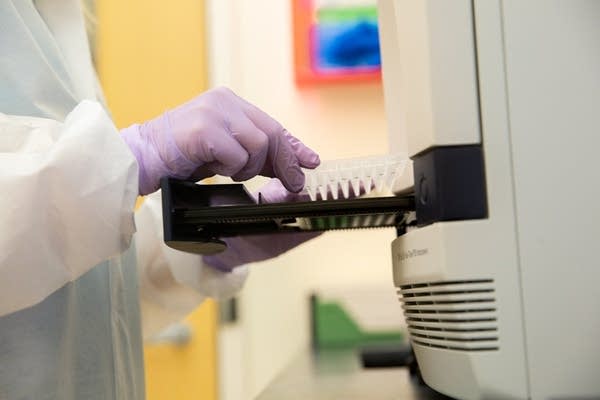
Go Deeper.
Create an account or log in to save stories.
Like this?
Thanks for liking this story! We have added it to a list of your favorite stories.
Updated: 2:55 p.m.
The COVID-19 outbreak in Minnesota has plateaued in the past week, an end to the steady reduction in confirmed cases and deaths that Minnesota saw throughout the month of June.
It comes as many Sun Belt states have seen skyrocketing case counts and hospitalizations. It’s unknown whether the same thing will happen in Minnesota — or if the outbreak in Minnesota will continue to hold steady or begin improving again.
In fact, the number of Minnesotans diagnosed with COVID-19 has trended upwards in the past week, though at least some of that increase appears to be driven by testing more people. The newly discovered cases reflect a mixture of the disease spreading and Minnesota finding more of the cases that were already out there but undiagnosed.
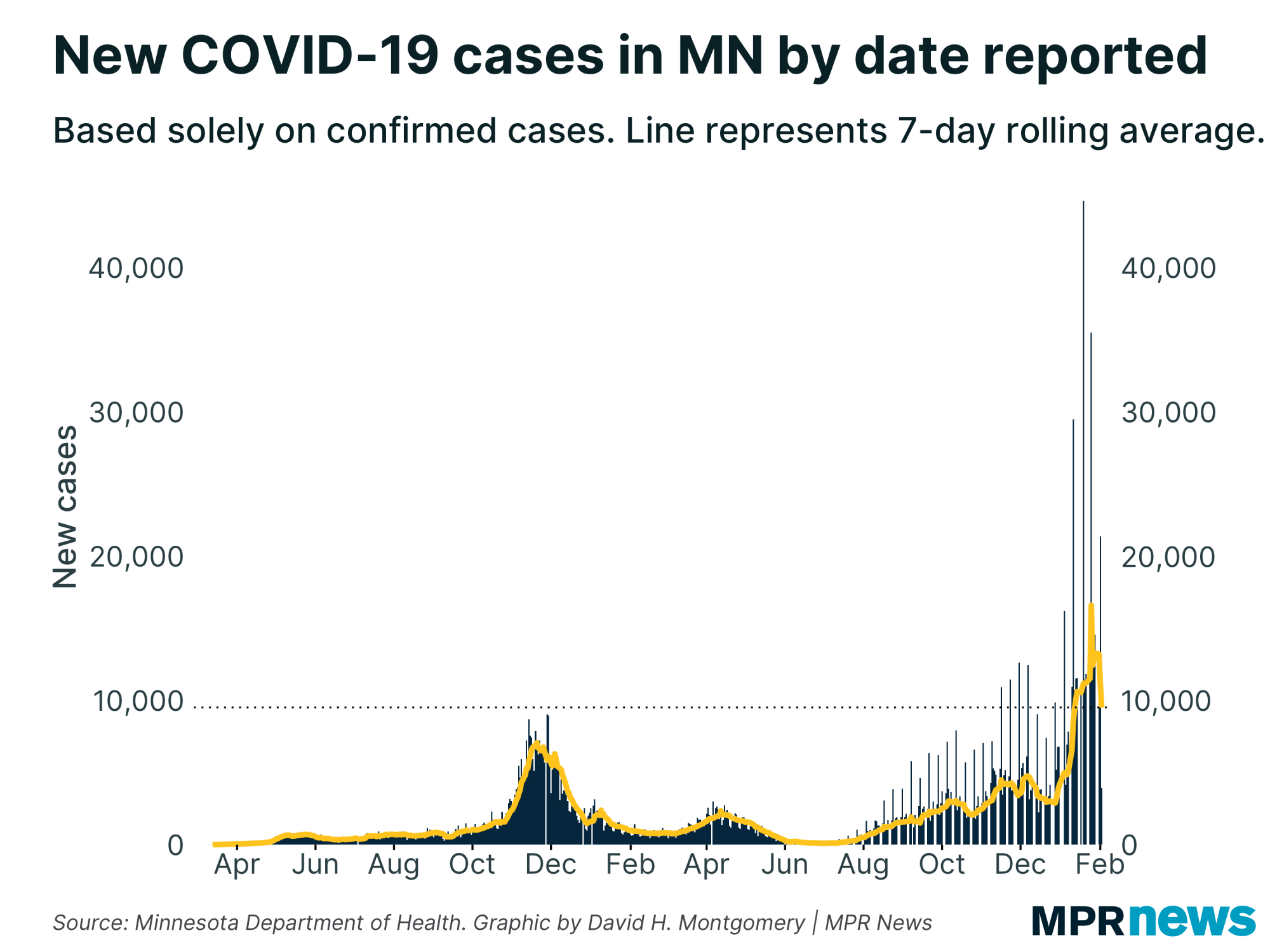
The percentage of tests to return positive fell Sunday, and has been largely flat over the past week. Hospitalization numbers also fell over the weekend, after a pause in the last week.
Turn Up Your Support
MPR News helps you turn down the noise and build shared understanding. Turn up your support for this public resource and keep trusted journalism accessible to all.
One driver of new cases over the past week has been young adults. People in their 20s now make up the largest age group of confirmed COVID-19 cases in Minnesota. That news comes after clusters of cases were tied to bars in Mankato and Minneapolis, suggesting that some younger adults aren’t doing enough to prevent the virus’ spread as they move back into public spaces.
Minnesota’s early sacrifices to limit COVID-19’s spread “will be undermined if we don’t get cooperation from all Minnesotans, especially younger Minnesotans, who are most active and social,” Kris Ehresmann, the state’s infectious disease director, told reporters Friday.
“We desperately need younger Minnesotans to take it seriously,” she added.
The state reported eight new COVID-19 deaths on Sunday, bringing the total death toll to 1,425. There were 523 new confirmed cases, bringing that total to 35,549.
The number of people hospitalized with COVID-19 in Minnesota has dropped sharply, from 335 on Friday to 300 on Saturday to 288 in Sunday's report. That's the lowest number in two months. The number of those patients being treated in ICUs also continued to fall, to their lowest rate in nearly two months.
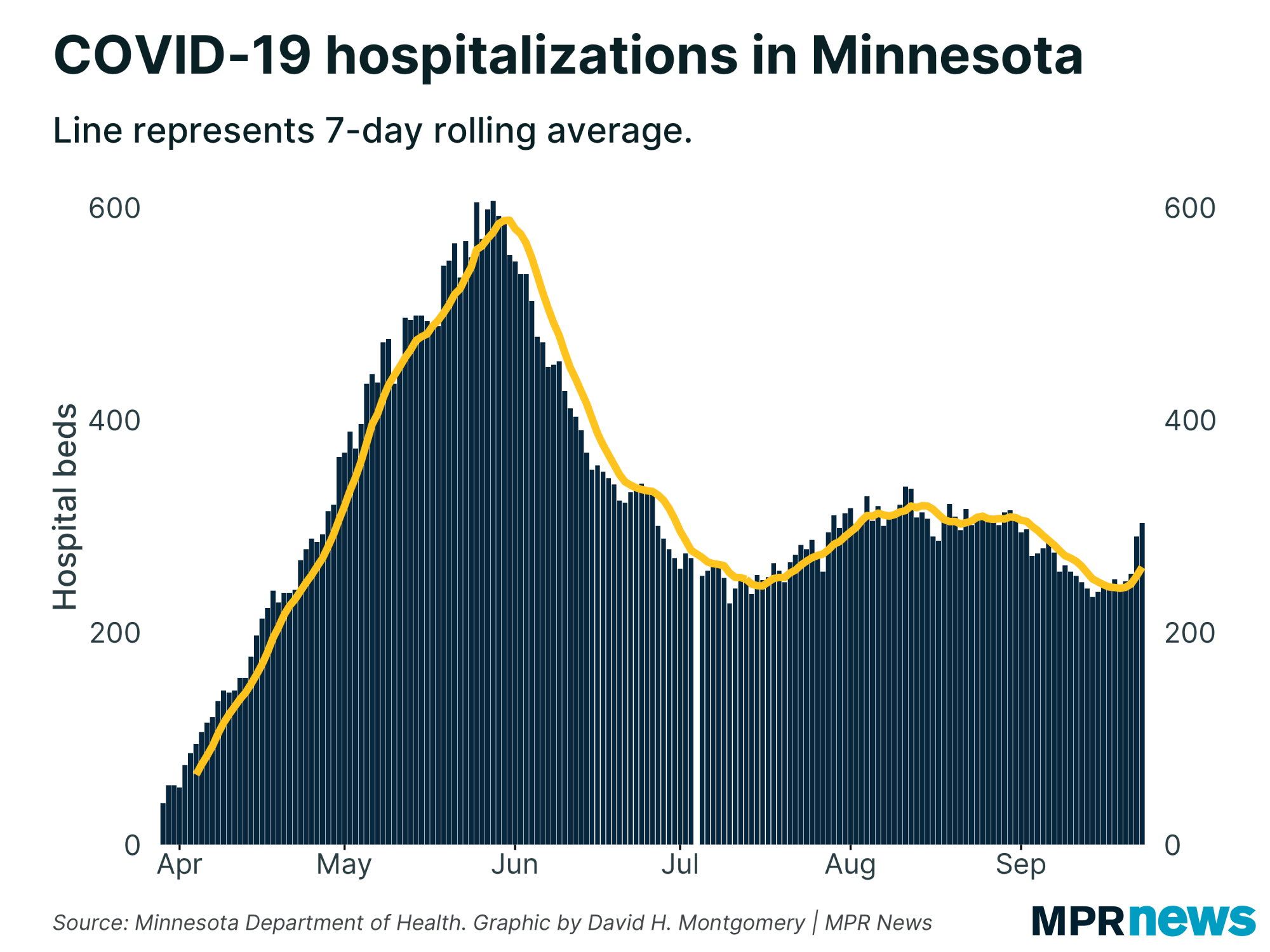
Sunday’s report from the Minnesota Department of Health included results from more than 16,000 tests. The percentage of positive tests fell from 3.7 to 3.2 percent.
Here are the latest coronavirus statistics:
35,549 cases confirmed (523 new) via 585,417 tests
1,425 deaths (8 new)
4,010 cases requiring hospitalization
288 people remain hospitalized; 143 in intensive care
30,809 patients no longer needing isolation
Another surge in the results comes from an outbreak at the state prison in Faribault, which has recorded 206 positive tests and two deaths among inmates since its first case was recorded on June 3. The Faribault prison had 1,718 inmates as of Saturday.
The latest death at the Faribault prison was Leroy Bergstrom, 71. He was diagnosed with COVID-19 on June 10 and had been hospitalized in critical condition since June 16.
In response to the outbreak, Minnesota’s prisons have limited prisoners’ social interactions and distributed masks. Some prisoners have also been released to reduce crowding, with the state prison population falling from about 8,900 on March 1 to 7,962 on June 25.
Bar-driven clusters
More than 100 cases of COVID-19 have been reported among Minnesotans in their 20s in the Mankato area who said they went to bars on June 12 and 13 — the first weekend bars and restaurants were allowed to serve indoors.
Two Mankato bars — Rounders and The 507 — were the focal points of that young adult outbreak, Ehresmann said Friday. Officials were also following up on a cluster of 30 cases at two Minneapolis bars — Cowboy Jack’s and Kollege Klub.
Social media from those bars shows they were crowded, with no room for social distancing, and people who were standing and not masked, so not following the state guidance, Ehresmann said.
“It’s not that you can’t socialize. It’s not that you can’t have fun,” she said. “But you need to do in a manner that’s safe for you and the people around you.”
Friday’s Health Department data showed that Minnesotans in their 20s now make up the largest age group of confirmed cases in Minnesota — 7,045 people infected, with two deaths.
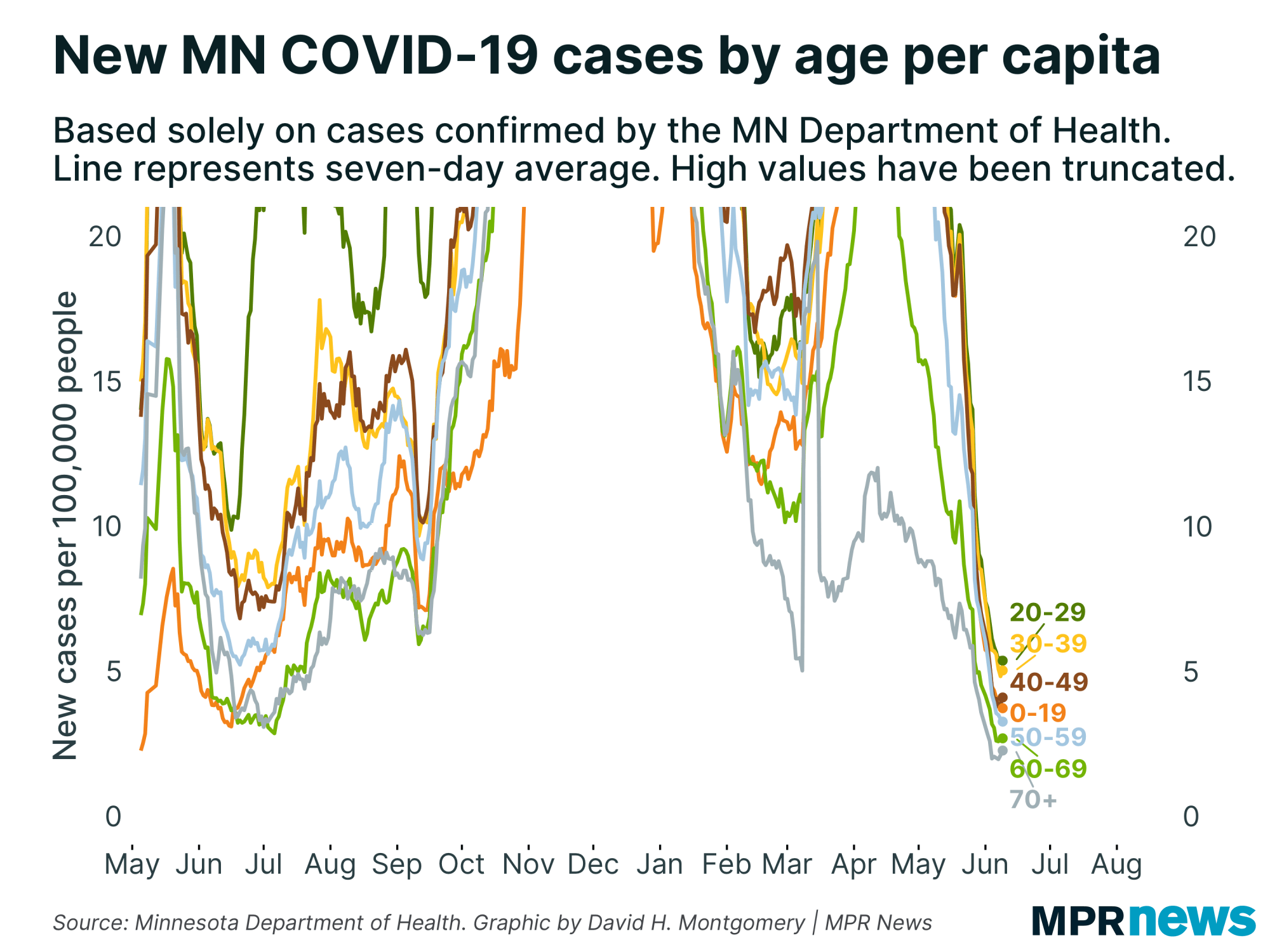
While those young people may be less likely to suffer complications from COVID-19, officials say the concern is that they may be unknowingly spreading the disease to grandparents or other potentially vulnerable populations.
The median age of confirmed cases in Minnesota has been dipping and is now just under 40 years old.
Ehresmann on Friday noted that some of the people who tested positive in Mankato work in child care, pointing out that they have a high likelihood of inadvertently spreading the disease to children and families.
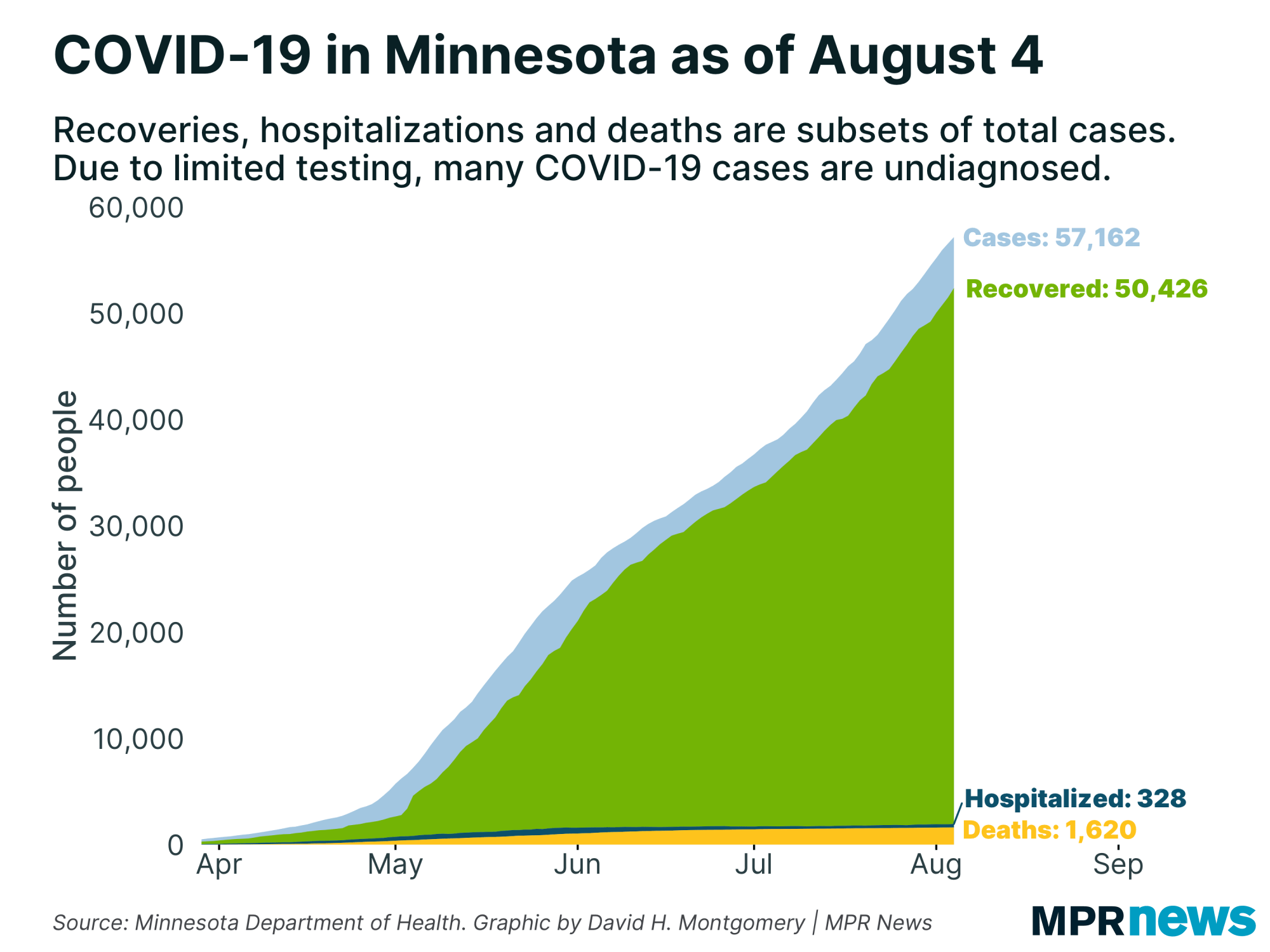
Meatpacking hot spots remain
Many of the outbreaks outside the Twin Cities metro area are focused around meatpacking plants. Officials have intensified testing in those hot spots, uncovering more infections.
That includes Mower County in southeastern Minnesota, where there were 868 confirmed cases as of Friday.
Mower County is home to Hormel Foods and Quality Pork Processors. Both have been partnering with Mayo Clinic to ramp up employee testing.
While some of Mower County’s positive cases are associated with people who work in the facilities and with the people they live with, county officials say they are also seeing transmission among people who live in the county but work in other counties where coronavirus is present.
Nobles, in southwestern Minnesota, reported 1,643 confirmed cases Friday. About 1 in 14 people now have tested positive for COVID-19 in the county since the pandemic began, although the count of new cases has slowed considerably in recent weeks.
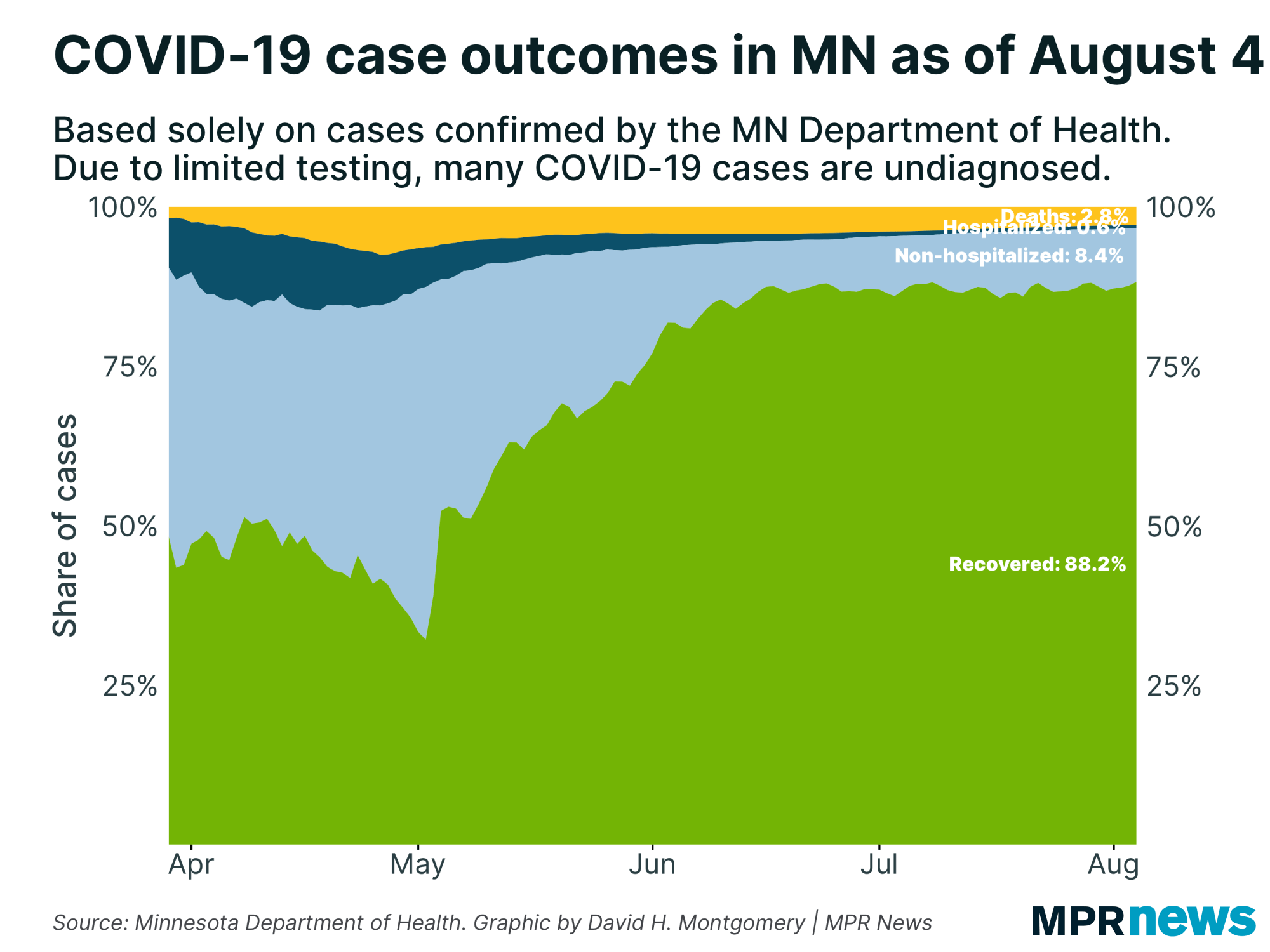
Worthington’s massive JBS pork processing plant was the epicenter of the Nobles outbreak. The JBS plant shut on April 20 but has since reopened with expanded hygiene and health monitoring measures.
Similar problems have been reported in Stearns County, where COVID-19 cases tied to two packing plants — Pilgrim’s Pride poultry plant in Cold Spring and Jennie-O Turkey in Melrose — skyrocketed in May.
An undisclosed number of workers at both plants have tested positive for the virus. There were about 55 confirmed cases in Stearns County in early May. By Friday, confirmed cases were at 2,156 with 19 deaths.
Kandiyohi County in west-central Minnesota is also dealing with a significant caseload more than two months after officials with the Jennie-O turkey processing plant there said some employees had tested positive for the coronavirus.
As of Friday, the Health Department reported 564 people have now tested positive in the county, the same as Thursday. The county had confirmed three COVID-19 cases in late April.
Cases have also climbed noticeably in Cottonwood County (130 cases), home to a pork processing plant in Windom, and in Lyon County (289 cases), around a turkey processor in Marshall.
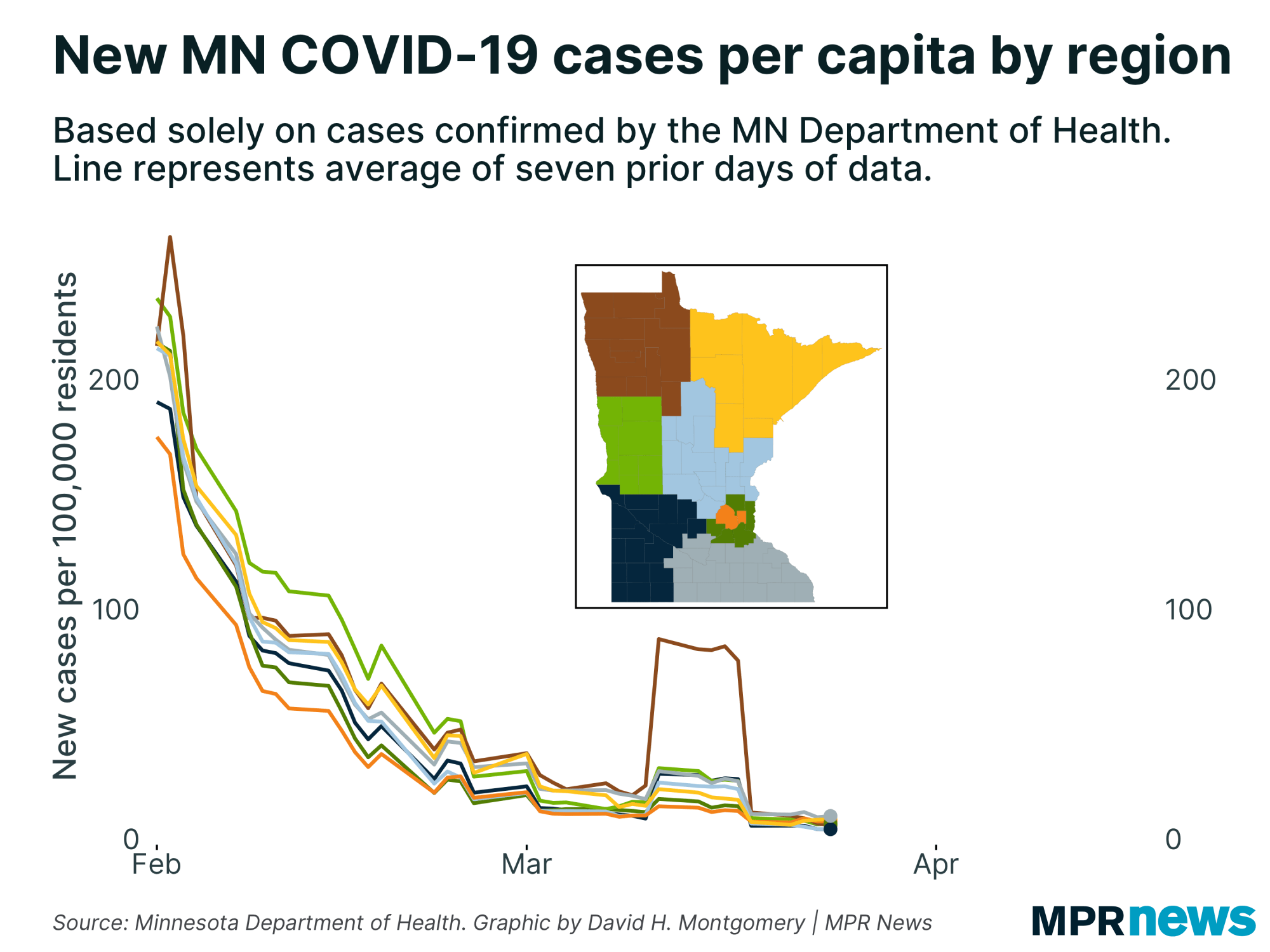
Developments from around the state
MN Medical Association, health care groups urge policymakers for mandatory masking
The Minnesota Medical Association and 20 other health care groups from around the state are urging public and private sector officials to require masks to stem the transmission of the coronavirus.
In a statement, the group says that a growing body of evidence shows that mask-wearing is helpful in preventing the virus from spreading.
The statement comes as states including Texas and Florida have seen a massive spike in cases weeks after relaxing social distancing rules, and as Minnesota has identified clusters of cases among bar-hoppers in the Mankato area and Minneapolis’ Dinkytown near the University of Minnesota campus.
The cities of St. Paul and Minneapolis require masks in stores and other indoor spaces, while some other Minnesota cities including Duluth and Rochester do not.
— Catharine Richert | MPR News
Top headlines
2nd Minnesota prison inmate dies after testing positive for COVID-19: A second Minnesota prison inmate has died after testing positive for COVID-19, state corrections officials said Saturday.
Drivers' testing lines persist, but MN officials say COVID-19 backlog going down: If you have to take a Minnesota driving knowledge test, bring a lawn chair and a good book. The Minnesota Driver and Vehicle Services continues to work through a big backlog of license renewals and tests into the system.
Four ways COVID-19 has hit different parts of Minnesota: The COVID-19 pandemic has touched all but one of Minnesota’s 87 counties — but it hasn’t hit all parts of the state equally. Here’s a breakdown of the cumulative cases per capita in each of Minnesota’s major regions.
MSP airport stepping up safety measures, encouraging passengers to wear masks: The "Travel Confidently” plan includes a variety of new sanitation measures and messaging to encourage social distancing and mask-wearing at the Twin Cities airport.
COVID-19 in Minnesota
Data in these graphs are based off Minnesota Department of Health cumulative totals released at 11 a.m. daily. You can find more detailed statistics on COVID-19 at the Health Department website.
The coronavirus is transmitted through respiratory droplets, coughs and sneezes, similar to the way the flu can spread.
Government and medical leaders are urging people to wash their hands frequently and well, refrain from touching their faces, cover their coughs, disinfect surfaces and avoid large crowds, all in an effort to curb the virus’ rapid spread.


